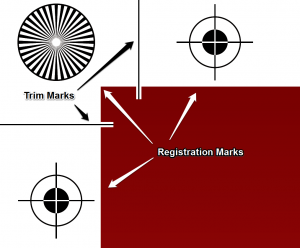If you've worked with a commercial printer for any length of time, it's likely that at some point they've asked you to supply your files in CMYK, or they may have told you that the color of your job shifted because your files had to be converted to CMYK. If you didn't know that meant, and were brave enough to ask, your printer undoubtedly told you that CMYK stands for Cyan, Magenta, Yellow and Black.
Unfortunately, you were told wrong.
What Does CMYK Stand For?
CMY does in fact stand for Cyan, Magenta & Yellow, but while many in the design & print professions are often taught the mnemonic that K stands for the K in Black (and that B was not used because B stands for Blue), this is explanation is incorrect.
The K in CMYK actually stands for “Key,” as in “Key Color” or “Key Plate,” and yes, black ink is typically used as the Key. However, in two-color separations where neither color is black, the darker of the two colors may be considered the Key Plate instead.
Granted this is a technicality, since it can be readily observed that in desktop publishing applications that use the CMYK color space, K is always black.
What is the Key Plate?
In traditional color separations, the Key Plate is the plate that holds the most detail in the image, and the remaining plates (usually Cyan, Magenta & Yellow) are carefully keyed, or aligned, with the Key Plate (usually Black). This process of aligning the color separation plates to the Key Plate is known as Registration. To assist in this process, every plate will have a set of registration marks on it that must be aligned perfectly, or the resulting image will appear out of focus or blurry. When this happens, we'll often say that the image is “out of register.”
So remember: Cyan — Magenta — Yellow — Key



